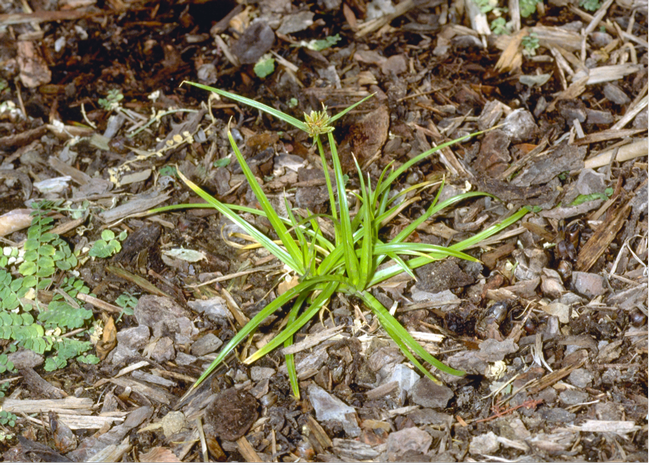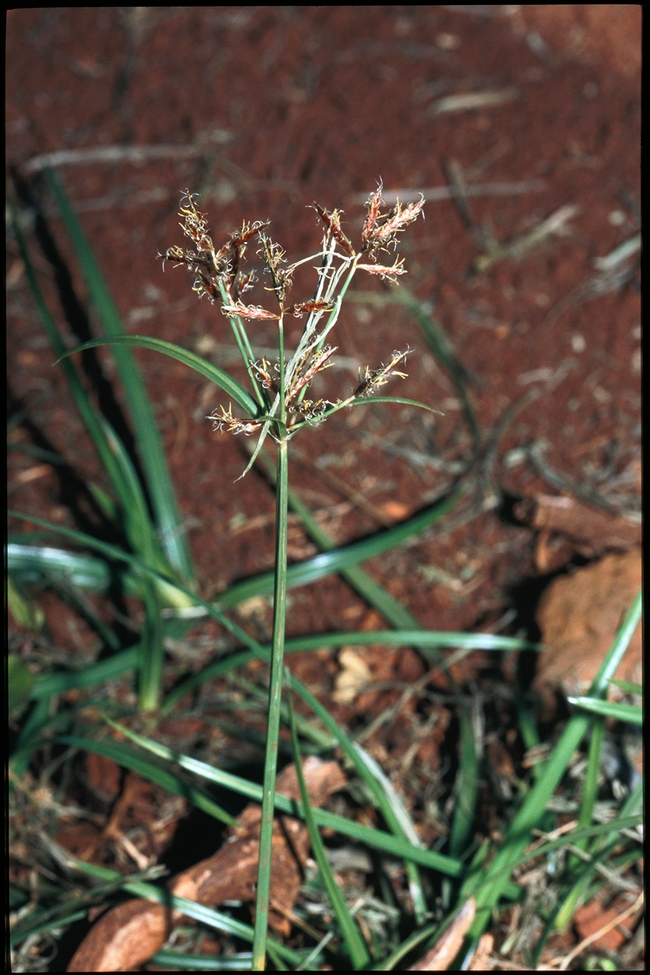
Yellow nutsedge grows throughout California while purple nutsedge can be found mostly in the south of the state and the Central Valley. Once established, nutsedge is difficult to control because it forms tubers in the soil that can live up to three years. The best approach is to prevent the weed's establishment and spread.
Purple nutsedge. (Photo: Joseph DiTomaso)The two most common weedy species of nutsedge in California are yellow nutsedge, Cyperus esculentus, and purple nutsedge, C. rotundus. Yellow nutsedge grows throughout California, while purple nutsedge is more often found in the southern coastal and desert portions of the state as well as the Central Valley.

Yellow nutsedge produces round, smooth, brown or black tubers that can be up to 7/16 inch (11 mm) wide at maturity. Only a single tuber forms at the end of a rhizome, and the tubers have a pleasant almond taste.
Red or red-brown scales cover purple nutsedge tubers. The tubers grow in chains with several tubers on a single rhizome, and they have a bitter taste. Purple nutsedge tubers are typically up to 1/2 inch (10-12 mm) wide but can be 7/16 to 1-1/3 inch (10 to 35mm) long.
The best approach for avoiding nutsedge problems is to prevent establishment of the weed in the first place. Once established, nutsedge plants are difficult to control.
To help you identify and better manage this troublesome weed, UC IPM has updated the Pest Notes: Nutsedge. This fact sheet was revised by UCCE San Diego Area Integrated Pest Management Advisor Emeritus, Cheryl Wilen. Updates include additional nonchemical control methods and herbicides that are effective for early nutsedge infestations.
This article was first published in the UC IPM Pests in the Urban Landscape blog.